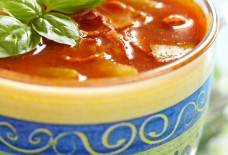Similarities Between Pakistani and Palestinian Cultures
BY: Arab America Contributing Writer
South Asian and Arab cultures encompass a wide range of diverse traditions embedded through different aspects of religion, cultural teachings, and extensive historical ties. Evidently, one may notice similarities that stem from the teachings of both cultures such as customs, etiquette, and society. In attempts to shine a light on the similitude of both cultures, I will be drawing from traditional values rather than modern ones to truly extract the root of the culture in both regions. To address the cultural similarities between these two regions, it is more practical to focus on a single country in order to narrow down the scope of this dense topic. This article is about the similarities between Pakistani and Palestinian cultures.
The Matter of Religion
These two regions are prominently adherents of Islam with a fairly large population of Christian minorities. One may come to the question of why religion plays a factor in tradition and culture? Religion serves as the basis for many cultural practices; Islam is essentially a comprehensive way of life. An individual uses religion as guidance towards building a lifestyle. These teachings implement the thoughts and actions of a Muslim and ultimately, build moral standings.
The religion is based on the principles of balance and peace essentially, serving to bring civilization by providing intellectual guidance for mankind to follow. It is important to highlight when discussing cultural practices, that Islam uniquely integrates all individuals and society as a whole into its teachings in order to direct guidance towards the construction of humanity and its growth.
Communication
To get a sense of culture, let’s first discuss communication style and etiquette in Pakistani and Palestinian countries. In both cultures, the proper and most common way to greet one another. “As-salamu alaykum” which in Arabic, translates to “may peace be upon you”. Although Arabic is not the official language of Pakistan, this greeting serves as the traditional Islamic greeting and thus, the customary manner to greet in Pakistan.
In more formal circumstances, it is normal for members of the same sex to exchange a firm handshake. In contrast, when they’re meeting with a close friend or family, men and women will generally gear towards a hug and kiss or a handshake and a hug. Essentially, in both regions, members of the opposite sex do not make direct physical contact with one another while greeting. This barrier between men and women stems from Islamic tradition as the religion prohibits acting physically towards the opposite gender.
Clothing
The variegated clothing of Arab and South Asian culture incorporates a great range of modesty balanced with fashion. Traditional Palestinian garments for men consists of different variations of a thobe. The thobe is a loosely fit, ankle-length garment with sleeves. A thobe worn can be worn by both genders. It’s considered to be the traditional embroidered dress that many Palestinian women wear. It can be dress up or down based on the material and embroidered items. Another garment includes a shirwal which is a baggy style pant that wraps tighter around the ankles.
Shirwal Similarly, when looking at Pakistani traditional clothing, the accustomed dressing for men and women is called salwar kameez. This is a two-piece garment consisting of a kameez, which is the top with open side-seams varying in length. Generally, the kameez for men tends to reach knee length. For women, this may vary from being as short as thigh length to as long as ankle-length. The kameez is typically paired with the shalwar, a loose article of clothing worn as pants.Palestinian and Pakistani traditional clothing builds off of the concept of modesty. Garments such as the kameez and the thobe, both present long articles of clothing. This allows ease in movement and provides coverage of body parts, highlighting modesty in clothing for both genders.
Shalwar Kameez The Pakistani shalwar and Palestinian shirwal also stem from the same understanding, being loose trousers. Typically in both cultures, members of the older generations tend to wear their traditional clothing. This is against a new, more modern sense of fashion. Western culture relies on this current trend.Social Customs
Family solidarity in both Pakistani and Palestinian cultures plays an important role in these separate societies. Family-oriented culture in both regions serves as the basic foundation for one’s life. This value is highly important. Both cultures build a reliance on their families as their main support system and confine them in their personal matters. Families are generally based on a joint family system in which multiple families live together in one household. This heavily emphasizes the importance of taking care of one another in these cultures. Children raised in a highly developed standard for responsibility to other family members.
Customarily, in these regions, elders have the most respect. This naturally ties into financial support for one another. The younger generation holds a responsibility to financially support their parents and elders. This usually lies within the duty of the eldest in the family, particularly the son. Joint family households typically divide their income amongst each other and disperse this money towards necessary expenses.
Responsibilities in traditional Palestinian and Pakistani households are typically divided by both genders. The majority of women are primarily accustomed to working in informal sectors of the workforce such as non-market activities and household work while men provide a greater amount of income.
Surely both Pakistani and Palestinian have cultural similarities in values, as well as deep history. These regions enriched with abundant traditions and values that overlap into a plethora of similarities.
Check out our BLOG here!



